 Have you seen the new Facebook reactions?
Have you seen the new Facebook reactions?
Wondering how they'll affect your Facebook page?
Facebook reactions let Facebook users go beyond liking a post by allowing them to choose from six emojis that show different emotions.
In this article I'll explore how Facebook reactions work, and how your Facebook page can get the most from them.

Listen to this article:
Where to subscribe: Apple Podcasts | Spotify | YouTube Music | YouTube | Amazon Music | RSS
Facebook Reactions for Fans
The new Facebook reactions work pretty easily for users. When users hover over a post's Like button in the Facebook news feed, a personal profile timeline, or a Facebook page timeline, they will be able to choose from one of the new six Facebook reactions.

Everyone can breathe a sigh of relief that Facebook reactions do not include a Dislike button. Hence, people cannot dislike your latest post (product, service, content, etc.). These reactions will simply allow expressions of like, love, laugh, wowed, saddened, or angered by your post.
The feature will work similarly for mobile users, but users will hold down the Like button instead of hovering over it.
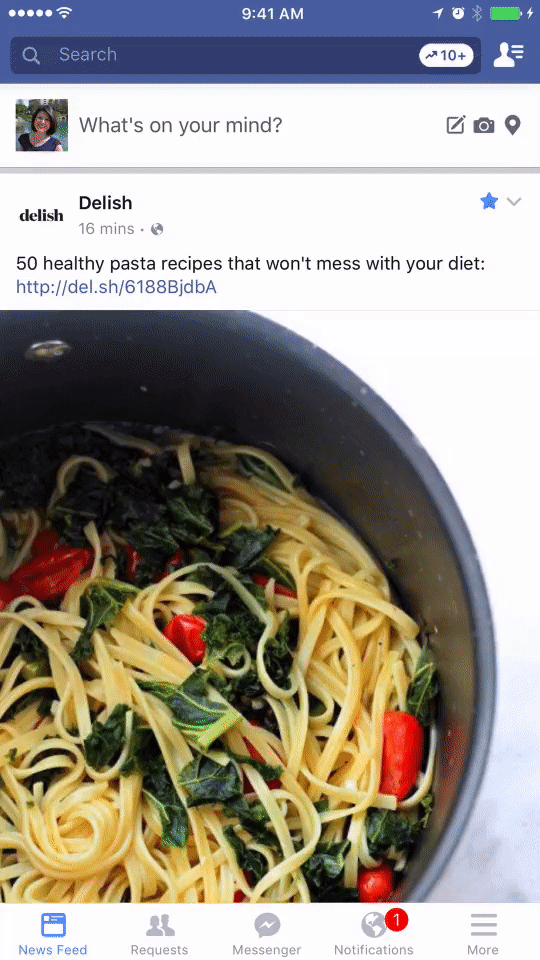
Some mobile app users have noted that you must restart or update your app to get the new feature to work. Others have had to log out of their account and log back in again.
Facebook Reactions for Pages
From a Facebook page admin perspective, a few things will change. For starters, you'll see in your notifications that people are reacting to your posts instead of just liking them.

On the posts themselves, you'll see an array of icons representing the different reactions that people have left on the post. On older posts, you'll see the new icon that represents likes, and on newer posts, you'll see all of the newer icons representing the different reactions that people have. People can also go back to older posts and add new reactions.
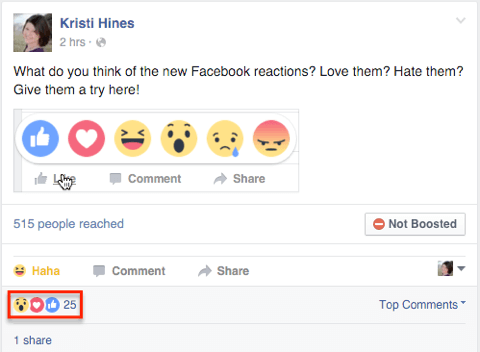
You can click on the link to see the breakdown of which fans had specific reactions so you can see who likes, loves, and has other feelings about your post.

Since page posts are public, it's important to understand that everyone can see the breakdowns of Facebook reactions, including people who are not admins and not even fans of the page. This means that you can go to other pages and see the breakdowns of reactions on their posts as well.
This can be useful for competitor research as you can get a good feel for how people will react to specific types of content, status updates, and announcements – especially since you can get a quick summary of the reactions right at the top without having to scroll through the entire list.

Note that only Facebook page admins will see the Liked / Invite buttons. If you are not a page admin, you only see Add Friend / Follow buttons next to people's names.
Get World-Class Marketing Training — All Year Long!
Are you facing doubt, uncertainty, or overwhelm? The Social Media Marketing Society can help.
Each month, you’ll receive training from trusted marketing experts, covering everything from AI to organic social marketing. When you join, you’ll also get immediate access to:
- A library of 100+ marketing trainings
- A community of like-minded marketers
- Monthly online community meetups
- Relevant news and trends updates
So far, Facebook reactions only work on the Like button for the main posts themselves, but not on comments. So don't expect to react to comments anytime soon.

In terms of your Facebook page's Insights, you can see the full breakdown of reactions for each of your posts by finding the post and clicking on it.
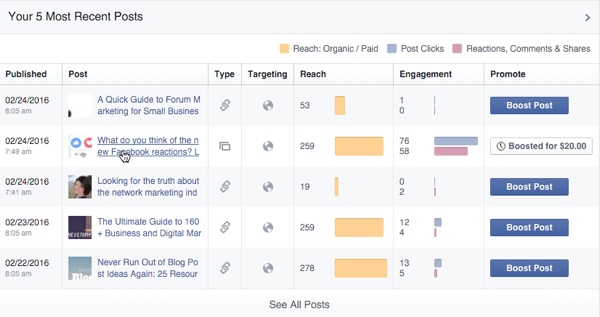
There, you can see the full post details, including the new Facebook reactions counts.

Discover Proven Marketing Strategies and Tips
Want to go even deeper with your marketing? Check out the Social Media Marketing Podcast! Publishing weekly since 2012, the Social Media Marketing Podcast helps you navigate the constantly changing marketing jungle, with expert interviews from marketing pros.
But don’t let the name fool you. This show is about a lot more than just social media marketing. With over 600 episodes and millions of downloads each year, this show has been a trusted source for marketers for well over a decade.
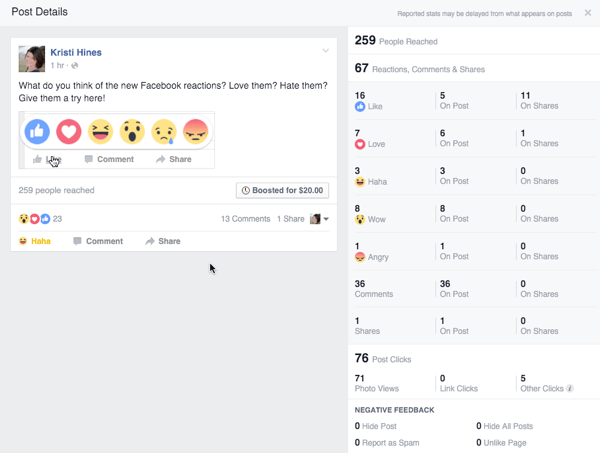
From an Insights perspective, Facebook reactions do not count as negative feedback. In other words, an angry reaction isn't categorized in the same area as a Hide Post, Report as Spam, Hide All Post, or Unlike Page. Hence, any reaction can be considered a good one.
Now that you know how Facebook reactions work for your fans and for your page, here are some ways to get the most from them.
#1: Encourage Fans to Use Reactions
People love trying new things. Simply invite your fans to test out the new reactions on your page today. Not only will it teach your fans how to use this feature, but it will also boost your page's overall engagement and organic reach.

For example, I initially planned to boost my post to test Facebook reactions, but I ended up canceling the promotion. The post itself ended up getting high engagement because I asked fans to test the feature and cross-promoted the post on my Facebook personal profile, Twitter profile, Google+ profile, and LinkedIn profile.
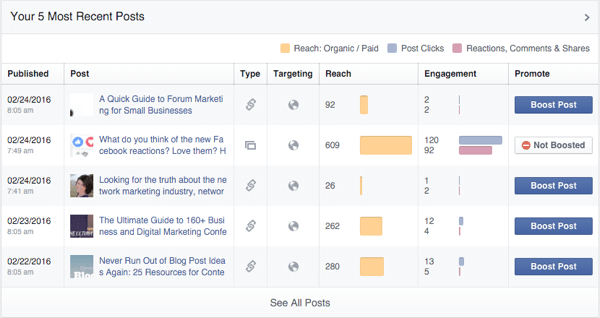
#2: Combine Reactions With Contest Entries
This post is a great example because it not only asks for a specific reaction, it also teaches fans how to use reactions AND throws in a giveaway!

Of course, if you take this approach, be sure to follow Facebook's guidelines about contests.
#3: Circumvent Negative Reviews
This example is actually a story from a local ABC news station, but it could be a great example for local businesses or companies that offer services AND have a Facebook page that is open to reviews.
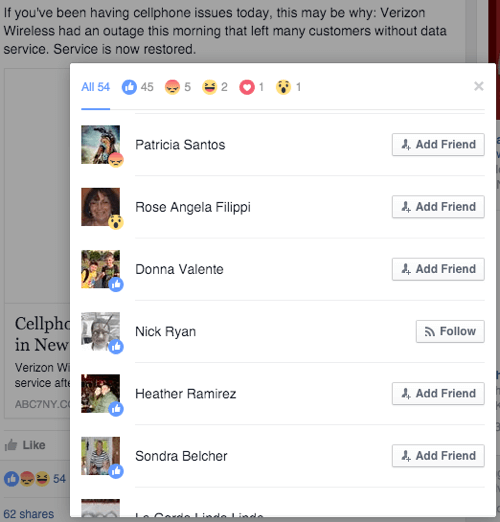
Instead of letting people come to your page and leave negative reviews when your service goes down, pin a post to the top of your page letting people know that your service is down, and you're working to resolve it as fast as possible. With the new angry reactions, people will hopefully react to the post angrily instead of leaving negative reviews.
#4: Research Your Competitor's Content
It might be a while before third-party tools have the ability to differentiate between likes and specific Facebook reactions. Until then, as mentioned earlier in this post, you can go to any Facebook page, click on a post's reactions, and see the summary of how fans have reacted to that post.

Use this to gauge how fans of Facebook pages similar to yours react to specific types of posts. For example, if you're thinking about sharing quotes, pictures of funny cats, product announcements, or something similar, you can now go one step further than just finding out if those types of posts will get engagement. You can see exactly how fans feel about those posts!
#5: Share Facebook Reactions as Your Page
If you're using Facebook as your page to comment on other pages to get more visibility for your Facebook page and your business, you can use your Facebook page to leave reactions on other Facebook page posts. Be sure to also leave a comment, as the comment will bring more visibility for your page than the reaction will.

In Conclusion
As you can see, the new Facebook reactions can be a fun way for Facebook fans to interact with pages, a great way for businesses to encourage specific emotional responses from fans, and a new way for businesses to learn from their competitors.
As a Facebook page owner, it's time to get creative with your updates to ensure that your fans engage with you using Facebook reactions in the best way possible!
What do you think? How do you like Facebook reactions so far? Let us know in the comments!
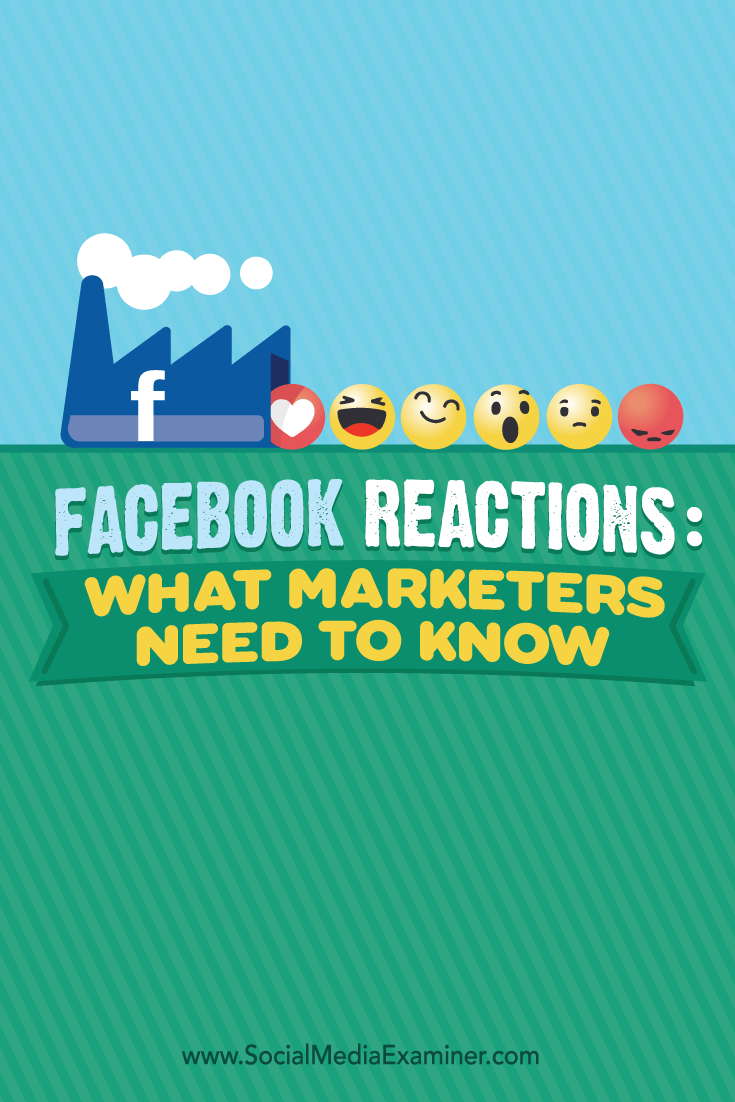
Attention Agency Owners, Brand Marketers, and Consultants

Introducing the Marketing Agency Show–our newest podcast designed to explore the struggles of agency marketers.
Join show host and agency owner, Brooke Sellas, as she interviews agency marketers and digs deep into their biggest challenges. Explore topics like navigating rough economic times, leveraging AI, service diversification, client acquisition, and much more.
Just pull up your favorite podcast app, search for Marketing Agency Show and start listening. Or click the button below for more information.

